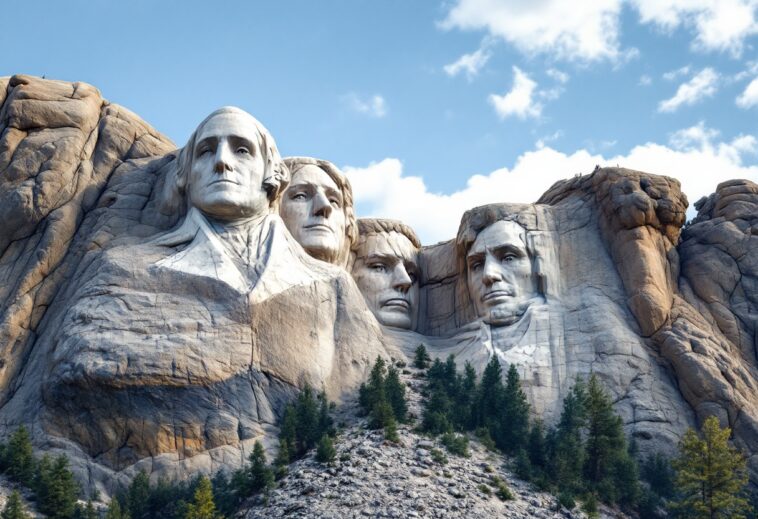Table of Contents
In a surprising twist in American politics, a Republican congresswoman has ignited a conversation that resonates with both nostalgia and controversy. Florida’s Rep. Anna Paulina Luna has announced plans to introduce legislation aimed at carving former President Donald Trump’s likeness into the iconic Mount Rushmore.
This proposal has stirred a mix of reactions, particularly among younger generations who are increasingly vocal about their views on historical representation.
The proposal and its implications
Mount Rushmore, a monumental tribute to four of America’s most significant presidents—George Washington, Thomas Jefferson, Theodore Roosevelt, and Abraham Lincoln—has long been a symbol of national pride.
However, the idea of adding Trump to this revered site raises questions about what it means to honor a president in today’s political climate. Luna’s push for this legislation comes on the heels of comments made by Corey Lewandowski, Trump’s former campaign manager, who suggested that Trump’s achievements warrant such recognition.
For many in Gen Z, the proposal feels like a reflection of the current political landscape, where the lines between admiration and criticism are often blurred. The notion of memorializing a figure as polarizing as Trump prompts a broader discussion about how history is shaped and who gets to be included in it.
As younger voters increasingly engage with political issues, they are challenging traditional narratives and advocating for a more inclusive representation of American history.
Historical context and modern relevance
Mount Rushmore, often referred to as the “Shrine of Democracy,” was completed in 1941 after years of construction.
It stands not only as a tribute to past leaders but also as a canvas for ongoing debates about national identity. The recent push to rename national monuments and geographic locations, including Trump’s proposal to rename the Gulf of Mexico to the “Gulf of America,” reflects a trend among conservatives to reshape historical narratives.
For Gen Z, who are navigating a world marked by social justice movements and calls for equity, the idea of altering Mount Rushmore to include Trump may seem out of touch. Many young people are advocating for a more nuanced understanding of history—one that acknowledges the complexities of leadership and the impact of policies on marginalized communities. As discussions about representation continue to evolve, the question remains: what does it mean to honor a leader in a monument that symbolizes democracy?
The future of political monuments
As Luna’s proposal gains traction, it highlights a significant shift in how political figures are memorialized. The conversation surrounding Trump’s potential addition to Mount Rushmore is not just about one individual; it reflects a larger discourse on the values we choose to celebrate as a nation. For Gen Z, who are often characterized by their activism and desire for change, the implications of such a decision could be profound.
In a time when many are calling for a reevaluation of historical figures and their legacies, the debate over Mount Rushmore serves as a microcosm of the broader societal shifts at play. As young voters continue to engage with these issues, their voices will undoubtedly shape the future of political monuments and the narratives we choose to uphold.




